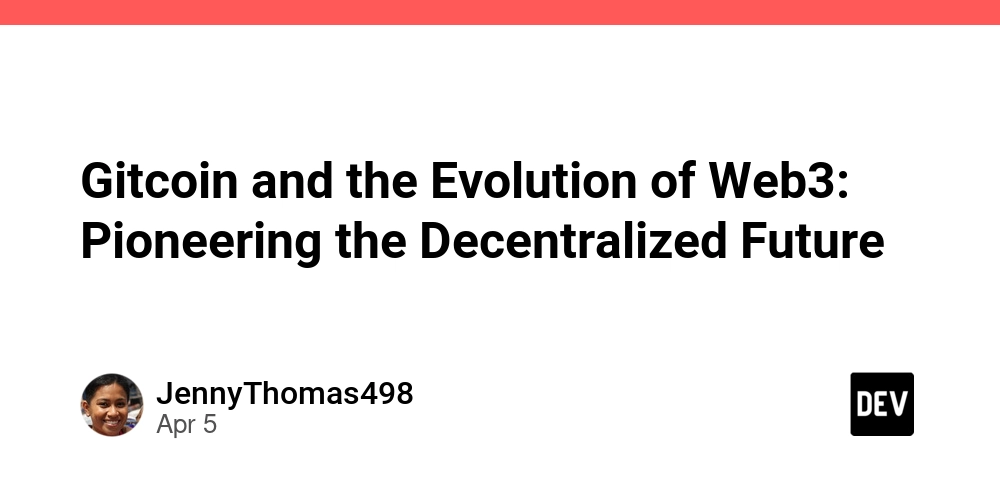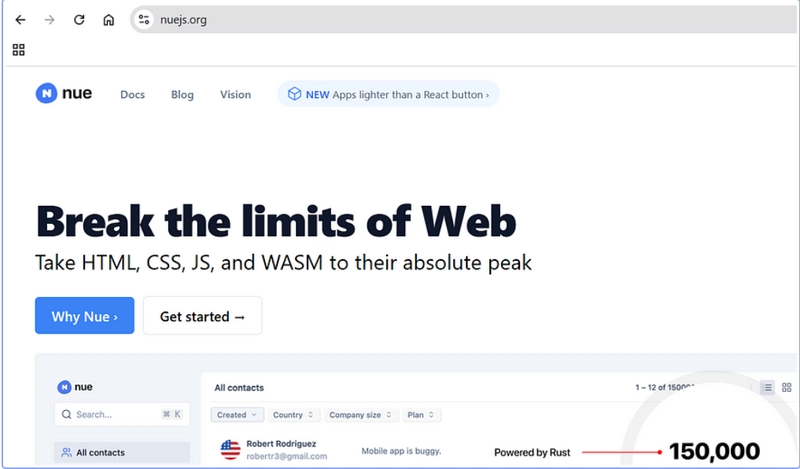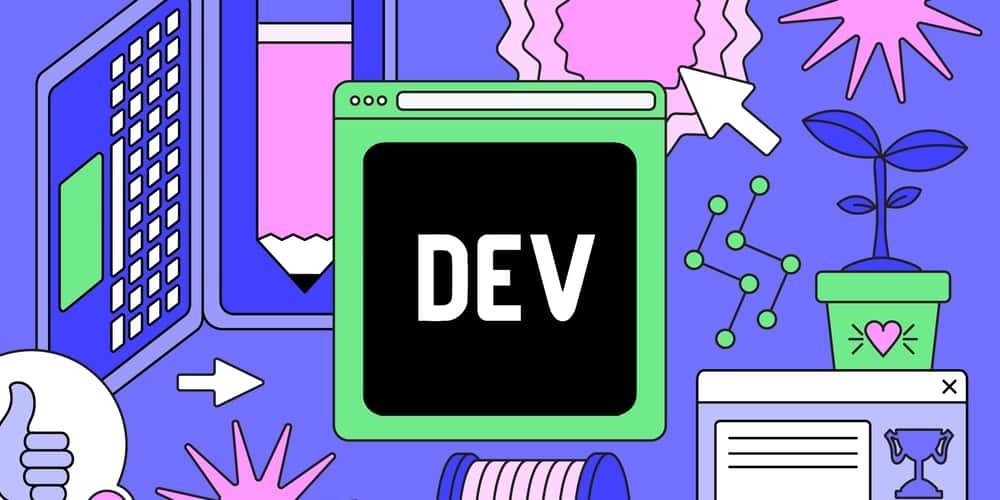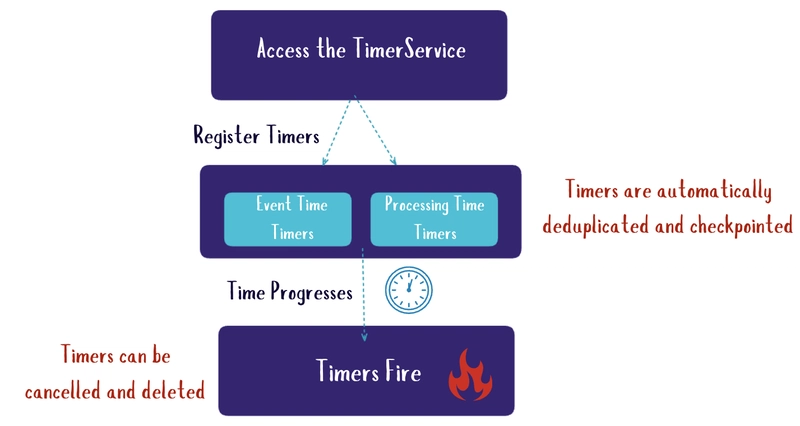Gitcoin and the Evolution of Web3: Pioneering the Decentralized Future
Abstract: This post explores the transformative role of Gitcoin in the evolution of Web3. We review the background of decentralized technologies, discuss core features of Gitcoin, explain practical applications, examine challenges, and offer insights on the future roadmap of a decentralized ecosystem. Through detailed analysis, tables, and bullet lists, the post highlights the importance of blockchain adoption, tokenized economies, and open source innovation, providing valuable context and practical examples for developers, innovators, and decision-makers. Introduction The digital landscape is rapidly transforming from centralized architectures to a decentralized future—a paradigm shift now widely known as Web3. At the heart of this evolution is Gitcoin, a platform that champions open-source development and collaborative innovation. Gitcoin empowers developers by facilitating decentralized funding mechanisms, such as bounties, grants, and hackathons. This detailed analysis explores Gitcoin’s technical contributions to Web3, the underlying blockchain technologies, and the emerging token-based economies that promise to disrupt traditional digital models. Today, decentralization is not only a buzzword; it is redefining how we interact with digital communities, manage our data, and build technological solutions. In this post, we examine the progress, challenges, and future innovations in the realm of Web3, weaving together technical insights, historical context, and practical examples to provide a comprehensive understanding of this evolving ecosystem. Background and Context Web3 emerged as a natural successor to earlier iterations of the internet. Here’s a brief overview of its evolution: Web 1.0 (Data-centric): A static repository of information with little interaction. Web 2.0 (Service-focused): Dynamic and interactive, yet largely dominated by centralized tech giants resulting in data ownership and privacy concerns. Web3 (Decentralized & User-Controlled): A paradigm that harnesses blockchain technology for trustless interactions, interoperability, and community governance. At the core of Web3 is blockchain—a secure, transparent, and decentralized ledger system. Learn more about the technical underpinnings of blockchain in this comprehensive overview. Gitcoin's Emergence in the Ecosystem Gitcoin rose as a response to challenges faced by open-source projects. Recognizing that many innovative projects lacked sustainable funding and community support, Gitcoin introduced creative funding models such as quadratic funding and collaborative bounties. These approaches not only incentivize contributions but also democratize the support mechanisms by letting the community directly decide which projects deserve backing. Gitcoin’s commitment aligns with principles found in the broader Web3 movement: decentralization, interoperability, and financial inclusion. Furthermore, Gitcoin integrates seamlessly with blockchain-based ecosystems, facilitating transparent and secure transactions. Core Concepts and Features Gitcoin’s platform is built around several key features that support and empower decentralized development: 1. Open Source Funding Mechanisms Gitcoin helps projects secure funding through innovative methods. These include: Fund Matching and Bounties: Developers earn rewards by tackling technical challenges. This model incentivizes creativity and problem-solving within the community. Quadratic Funding and Gitcoin Grants: By utilizing quadratic funding—a novel economic model—Gitcoin ensures that contributions scale effectively with community support. Learn more about how projects benefit from these mechanisms in the detailed Gitcoin Grants overview. Hackathons and Collaboration Events: Gitcoin organizes hackathons which serve as collaborative spaces where innovative ideas are transformed into working prototypes. 2. Decentralized Governance and Community Empowerment Gitcoin emphasizes decentralized governance where community decisions drive project trajectories. This model reduces reliance on centralized authorities and ensures transparency, accountability, and inclusivity within the platform. 3. Tokenized Economies At the heart of Web3 lie token-based economic models. Gitcoin leverages native tokens and blockchain-based rewards to: Motivate contributions Provide direct incentives for developers Facilitate microtransactions that are secure and verifiable For more on tokenization and how assets gain value in decentralized ecosystems, check out this tokenization guide. Table: Gitcoin’s Core Features and Their Benefits Feature Description Key Benefit Bounties & Challenges Financial rewards for solving specific issues. Incentivizes innovation and collaboration. Quadratic Funding & Grants Uses community-based funding models to distribute resources. Ensures fair distribution and transparency.

Abstract:
This post explores the transformative role of Gitcoin in the evolution of Web3. We review the background of decentralized technologies, discuss core features of Gitcoin, explain practical applications, examine challenges, and offer insights on the future roadmap of a decentralized ecosystem. Through detailed analysis, tables, and bullet lists, the post highlights the importance of blockchain adoption, tokenized economies, and open source innovation, providing valuable context and practical examples for developers, innovators, and decision-makers.
Introduction
The digital landscape is rapidly transforming from centralized architectures to a decentralized future—a paradigm shift now widely known as Web3. At the heart of this evolution is Gitcoin, a platform that champions open-source development and collaborative innovation. Gitcoin empowers developers by facilitating decentralized funding mechanisms, such as bounties, grants, and hackathons. This detailed analysis explores Gitcoin’s technical contributions to Web3, the underlying blockchain technologies, and the emerging token-based economies that promise to disrupt traditional digital models.
Today, decentralization is not only a buzzword; it is redefining how we interact with digital communities, manage our data, and build technological solutions. In this post, we examine the progress, challenges, and future innovations in the realm of Web3, weaving together technical insights, historical context, and practical examples to provide a comprehensive understanding of this evolving ecosystem.
Background and Context
Web3 emerged as a natural successor to earlier iterations of the internet. Here’s a brief overview of its evolution:
- Web 1.0 (Data-centric): A static repository of information with little interaction.
- Web 2.0 (Service-focused): Dynamic and interactive, yet largely dominated by centralized tech giants resulting in data ownership and privacy concerns.
- Web3 (Decentralized & User-Controlled): A paradigm that harnesses blockchain technology for trustless interactions, interoperability, and community governance.
At the core of Web3 is blockchain—a secure, transparent, and decentralized ledger system. Learn more about the technical underpinnings of blockchain in this comprehensive overview.
Gitcoin's Emergence in the Ecosystem
Gitcoin rose as a response to challenges faced by open-source projects. Recognizing that many innovative projects lacked sustainable funding and community support, Gitcoin introduced creative funding models such as quadratic funding and collaborative bounties. These approaches not only incentivize contributions but also democratize the support mechanisms by letting the community directly decide which projects deserve backing.
Gitcoin’s commitment aligns with principles found in the broader Web3 movement: decentralization, interoperability, and financial inclusion. Furthermore, Gitcoin integrates seamlessly with blockchain-based ecosystems, facilitating transparent and secure transactions.
Core Concepts and Features
Gitcoin’s platform is built around several key features that support and empower decentralized development:
1. Open Source Funding Mechanisms
Gitcoin helps projects secure funding through innovative methods. These include:
Fund Matching and Bounties:
Developers earn rewards by tackling technical challenges. This model incentivizes creativity and problem-solving within the community.Quadratic Funding and Gitcoin Grants:
By utilizing quadratic funding—a novel economic model—Gitcoin ensures that contributions scale effectively with community support. Learn more about how projects benefit from these mechanisms in the detailed Gitcoin Grants overview.Hackathons and Collaboration Events:
Gitcoin organizes hackathons which serve as collaborative spaces where innovative ideas are transformed into working prototypes.
2. Decentralized Governance and Community Empowerment
Gitcoin emphasizes decentralized governance where community decisions drive project trajectories. This model reduces reliance on centralized authorities and ensures transparency, accountability, and inclusivity within the platform.
3. Tokenized Economies
At the heart of Web3 lie token-based economic models. Gitcoin leverages native tokens and blockchain-based rewards to:
- Motivate contributions
- Provide direct incentives for developers
- Facilitate microtransactions that are secure and verifiable
For more on tokenization and how assets gain value in decentralized ecosystems, check out this tokenization guide.
Table: Gitcoin’s Core Features and Their Benefits
| Feature | Description | Key Benefit |
|---|---|---|
| Bounties & Challenges | Financial rewards for solving specific issues. | Incentivizes innovation and collaboration. |
| Quadratic Funding & Grants | Uses community-based funding models to distribute resources. | Ensures fair distribution and transparency. |
| Hackathons | Events that promote collaborative development on emerging solutions. | Sparks creativity and rapid prototyping. |
| Decentralized Governance | Community-led decision-making processes for platform developments. | Enhances trust and inclusivity. |
| Token-Based Incentives | Rewards integrated with blockchain technologies. | Provides secure and verifiable transactions. |
Applications and Use Cases
Gitcoin’s approach is rapidly redefining the future of work in the Web3 space. Let’s look at some practical examples:
Case 1: Funding Open Source Projects
In the conventional model, developers typically struggle to find sufficient financial support for their open-source projects. Gitcoin’s model of Gitcoin Grants offers a sustainable solution. Through community contributions and quadratic funding, projects that resonate with users receive a higher share of funds. This not only keeps innovation alive but also fosters long-term project sustainability. For further insights on the sustainability of open source through tokenization, refer to this detailed guide.
Case 2: Hackathons and Collaborative Development
By organizing global hackathons, Gitcoin builds fertile grounds for innovation. During these events, teams come together to solve technical challenges in an environment that encourages transparency and rapid iteration. These hackathons are critical for prototyping ideas that could later become foundational for influential decentralized platforms.
Case 3: Decentralized Work Ecosystems
Web3 transforms the traditional work model by creating decentralized marketplaces where transactions occur without intermediaries. In such marketplaces, developers and creators can leverage their digital identities and tokenized assets for verified transactions. This is crucial in evolving job markets, where trust and transparency are paramount. The new Web3 job model ensures that digital labor is fairly rewarded and community-governed.
Challenges and Limitations
Despite its promise, Web3 and Gitcoin face a series of technical and adoption challenges:
Scalability and Usability:
As more transactions and contributions occur on the blockchain, ensuring that networks remain scalable remains a primary concern. Improving user interfaces is also crucial for wider adoption.Security Risks:
While blockchain is inherently secure, vulnerabilities in smart contract code or protocol implementations can invite cyber threats. For a deep dive into these issues, see our blockchain security guide.Regulatory Uncertainty:
Governments across the globe are grappling with regulations that balance innovation with consumer protection. A clear regulatory framework is necessary for mass adoption of Web3.Inclusive Access:
Bridging the digital divide is essential. Initiatives must invest in accessible education and simplified tools for users, allowing broader and more inclusive participation in decentralized ecosystems.
Here is a bullet list of key challenges:
- Technical Scalability: Networks must dynamically handle increased transaction loads.
- Usability Barriers: End-user interfaces need to be intuitive.
- Security Concerns: Vigilant smart contract audit processes are required.
- Regulatory Hurdles: Clear, consistent guidelines are needed globally.
- Digital Literacy: Broader education initiatives must be adopted.
Future Outlook and Innovations
The future of Web3 looks promising, driven by continued innovation and community collaboration. Consider these trends and potential future directions:
1. Enhanced Interoperability Across Blockchains
One of the key objectives of decentralized systems is seamless communication among diverse blockchain networks. Projects like Arbitrum and Ethereum Interoperability are paving the way for cross-chain solutions that foster interoperability. This enhancement will allow data and value to flow more freely across ecosystems, encouraging more robust and integrated platforms.
2. Scalable Decentralized Governance
Innovations in decentralized governance will empower communities to influence platform evolution more effectively. Efforts such as Arbitrum and Community Governance bring us closer to truly democratic digital spaces, where every user’s voice holds tangible power.
3. Broader Adoption of Token Economies
As more users and developers understand the benefits of token economies, we will see an expansion in tokenized incentive systems. Token-based rewards, reputation systems, and micro-transactions will form the backbone of future decentralized work models.
4. Advanced Security and Privacy Protocols
Continuous improvements in blockchain security—coupled with advanced privacy measures—will mitigate risks and foster trust. Utilizing solutions like secure cross-chain bridges (e.g., Arbitrum and Cross-Chain Bridges) will enhance both security and usability.
5. Sustainable Open Source Funding
Looking ahead, funding models will evolve further. The integration of transparent blockchain-based funding not only reassures contributors but also mitigates inequities found in traditional finance. A recent discussion on sustainable funding solutions from the open source community can be found in this insightful Dev.to post.
Other notable perspectives include:
- Elon Musk and the Open Source Revolution: Pioneering a New Era of Innovation which discusses how influential tech leaders are supporting open source innovation.
- Fueling Innovation Sustainably: Income Models for Open Source Projects which explains how equitable funding models can drive long-term success.
Summary
Gitcoin sits at the intersection of technology, community, and finance in this new decentralized era. It not only bridges the gap between open-source developers and funding opportunities but also champions a future where individuals control their digital destinies. In reviewing its key features—from bounties and hackathons to decentralized governance and tokenized economics—we see that Gitcoin is more than a funding platform; it is a catalyst for the broader evolution of Web3.
To recap our discussion:
- Abstract & Introduction: We laid out the vision for a decentralized future driven by Gitcoin and Web3 principles.
- Background and Context: We chronicled the evolution of the internet and defined core blockchain concepts.
- Core Concepts and Features: We highlighted Gitcoin’s innovative funding mechanisms, decentralized governance, and token-based rewards.
- Applications and Use Cases: Real-world examples demonstrated how Gitcoin is reshaping open source funding and collaborative development.
- Challenges and Limitations: We addressed scalability, security, regulatory concerns, and the digital literacy gap.
- Future Outlook and Innovations: Enhanced interoperability, scalable governance, and sustainable funding models promise a robust decentralized future.
As the digital landscape continues to evolve, the fusion of technologies like blockchain, decentralized governance, and open source funding models signals a revolutionary shift in how we build, collaborate, and innovate. By leveraging platforms like Gitcoin, the world of Web3 is not only re-imagining the future of work but also ensuring that technology serves the collective good.
For anyone keen to explore more about decentralized innovation, check out Gitcoin’s official website at Gitcoin. Additionally, further resources on blockchain technology, tokenized assets, and open source sustainability are available at:
- What Is Blockchain?
- Tokenization of Assets
- Gitcoin Grants
- Why Are NFTs Valuable?
- Blockchain Security
The convergence of these innovative trends not only defines a new era in technology but also creates opportunities for a more inclusive and equitable digital future. Embracing these changes now can empower communities, drive sustainable funding, and pave the way for an empowered Web3 ecosystem.
Embrace the revolution. With tools like Gitcoin and emerging Web3 innovations, you are part of a global movement aiming to democratize finance, technology, and data ownership. The future is decentralised, and every contribution matters.











































































































































































![[The AI Show Episode 142]: ChatGPT’s New Image Generator, Studio Ghibli Craze and Backlash, Gemini 2.5, OpenAI Academy, 4o Updates, Vibe Marketing & xAI Acquires X](https://www.marketingaiinstitute.com/hubfs/ep%20142%20cover.png)




























































































































![[DEALS] The Premium Learn to Code Certification Bundle (97% off) & Other Deals Up To 98% Off – Offers End Soon!](https://www.javacodegeeks.com/wp-content/uploads/2012/12/jcg-logo.jpg)


![From drop-out to software architect with Jason Lengstorf [Podcast #167]](https://cdn.hashnode.com/res/hashnode/image/upload/v1743796461357/f3d19cd7-e6f5-4d7c-8bfc-eb974bc8da68.png?#)








































































































.png?#)


































_Christophe_Coat_Alamy.jpg?#)
.webp?#)
 (1).webp?#)






































































































![Apple Considers Delaying Smart Home Hub Until 2026 [Gurman]](https://www.iclarified.com/images/news/96946/96946/96946-640.jpg)
![iPhone 17 Pro Won't Feature Two-Toned Back [Gurman]](https://www.iclarified.com/images/news/96944/96944/96944-640.jpg)
![Tariffs Threaten Apple's $999 iPhone Price Point in the U.S. [Gurman]](https://www.iclarified.com/images/news/96943/96943/96943-640.jpg)

































































































































